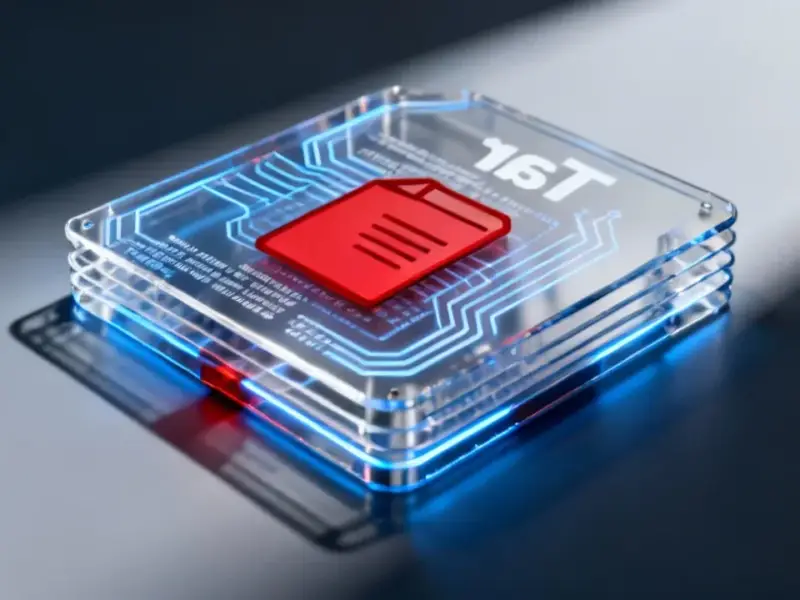According to TheRegister.com, a massive power outage in late April 2025 plunged Spain, Portugal, and southwestern France into darkness, affecting tens of millions and requiring 23 hours for Spain’s national grid to fully recover. While this incident resulted from cascading technical failures rather than cyberattacks, it highlighted Europe’s grid vulnerability, reminiscent of the 2015 Ukraine grid attack attributed to Russian hackers. The European Commission is funding resilience projects including the eFort framework and TNO’s SOARCA tool, the first open-source security orchestration platform designed specifically for power plants, with Ukraine scheduled to demo the system this year. Experts warn that Europe’s fragmented incident response and aging infrastructure—including systems running Windows XP, BeOS, and 30-year-old GE JungleMUX software—create critical vulnerabilities in the continent’s tightly interconnected energy network.
The Architectural Nightmare Behind the Grid
What makes Europe’s energy infrastructure particularly vulnerable isn’t just the age of the technology, but the architectural complexity that has evolved over decades. Within a single gas turbine, you might find seven different control systems managing dozens of devices, each with separate IP addresses and communication protocols. This creates what security professionals call an “expanded attack surface” where each component represents a potential entry point. The problem is compounded by vendor lock-in, where equipment manufacturers restrict access to their systems under the guise of reliability and warranty protection, effectively creating security black boxes that cybersecurity teams cannot properly assess or monitor.
The reliance on insecure protocols like DNP3 (Distributed Network Protocol) represents a fundamental design flaw from an era when cybersecurity wasn’t a primary concern. These protocols lack basic security controls—no encryption, no authentication, no access controls—meaning any command sent to these systems is executed without verification. When you combine this with the reality that many rural substations still use dial-up internet connections, you have a perfect storm of vulnerability where ancient technology meets modern threat actors.
Europe’s Unique Interconnection Vulnerability
Europe’s energy grid differs fundamentally from other regions due to its unprecedented level of cross-border integration. Where North American grids operate as largely independent systems, Europe’s network functions as a single, continent-wide organism. This creates both efficiency benefits and catastrophic failure risks. The Spanish outage demonstrated how problems can cascade across borders within minutes, affecting nations that rely on energy imports from neighboring countries. This interconnectedness means that a cyberattack targeting one nation’s infrastructure could potentially trigger a continent-wide blackout through domino effects that current security models aren’t designed to contain.
The fragmentation in incident response protocols across different countries and operators creates coordination gaps during emergencies. When every nation has its own procedures, communication standards, and escalation paths, responding to cross-border incidents becomes exponentially more difficult. This lack of standardization means that during a real crisis, operators must rely on ad hoc cooperation while critical minutes tick away. The Network Code on Cybersecurity (NCCS) represents a step toward addressing this, but implementation and enforcement across 27 member states with different regulatory frameworks and threat priorities remains a monumental challenge.
SOARCA: A New Approach to Grid Security
The SOARCA tool being developed by TNO and TU Delft represents a paradigm shift in how we approach critical infrastructure protection. Traditional SOAR (Security Orchestration, Automation and Response) systems have been confined to IT environments, but SOARCA extends this concept to operational technology (OT) and physical infrastructure. What makes this approach innovative is its layered architecture—deploying SOAR capabilities at every level from individual substations to control rooms to enterprise systems and security operations centers. This creates a coordinated defense where anomalies can be detected and contained before they spread laterally through the network.
The integration of CACAO Playbooks provides standardized, automated workflows that can execute coordinated responses across different systems and vendors. This addresses one of the fundamental challenges in grid security: the inability of disparate systems to communicate effectively during an incident. The ability to conduct real-time digital modeling of attack impacts gives operators something they’ve never had before—the capacity to understand the consequences of defensive actions before executing them, preventing well-intentioned security measures from causing additional disruptions.
The Implementation Reality Check
Despite the technical promise of solutions like SOARCA, the reality of implementation reveals why grid security remains so challenging. As Ukraine’s power grid operator JSC NEK Ukrenergo candidly acknowledged, even in peaceful times, deployment would require significant capital investment, staffing, training, and ongoing maintenance. This highlights the fundamental economic tension in critical infrastructure security: the costs are immediate and substantial, while the benefits are theoretical until a catastrophic event occurs. Many grid operators face the “head in the sand” mentality described by experts, believing that what happened in Ukraine won’t happen to them.
The UK’s experience with healthcare and national grid technology adoption provides a cautionary tale. These sectors have historically been slow to adopt new technologies, even when they promise both improved security and cost savings. The challenge of unifying disparate systems across different vendors, generations of technology, and regulatory environments creates implementation inertia that sophisticated attackers can exploit. The eFort framework and related European Commission initiatives represent important steps, but they must overcome decades of accumulated technical debt and organizational resistance.
Strategic Implications for National Security
The cybersecurity challenges facing Europe’s energy grid extend beyond technical vulnerabilities to fundamental questions of national security and geopolitical strategy. The anonymous expert’s observation about Ukraine building “redundancies within redundancies” reveals how conflict drives innovation in infrastructure resilience. However, this approach creates a dangerous paradox: the more redundant and resilient a system becomes, the more complex and difficult to secure it may be. Each additional connection between substations, while providing backup capacity, also creates potential attack vectors that must be monitored and protected.
Bret Jordan’s insight about allowing nation-state attackers to maintain a foothold for monitoring represents a sophisticated approach to cyber defense that runs counter to traditional security thinking. In critical infrastructure protection, complete eradication of threats may be less important than containment and intelligence gathering. Understanding an adversary’s tactics, techniques, and procedures can provide more value than simply kicking them out, only to have them return through different vulnerabilities. This requires a fundamental shift from reactive security to proactive intelligence-driven defense, where the goal isn’t just prevention but understanding and countering adversary campaigns over extended timeframes.
The Path Forward: Standardization vs. Customization
The tension between standardization and customization represents the central challenge in securing Europe’s energy infrastructure. On one hand, Jason Keirstead’s call for “collective defense” through information sharing and standardized responses offers the promise of coordinated protection. The ability to detect attacks in one organization and automatically push defenses to others could fundamentally change the threat landscape. However, this requires a level of transparency and cooperation that runs counter to traditional competitive and national security interests.
The solution likely lies in hybrid approaches that combine standardized communication protocols and incident response frameworks with customized implementation suited to each nation’s specific infrastructure and threat profile. The SOARCA tool’s open-source foundation provides a promising model, allowing for community development while enabling local adaptation. As European regulators formalize the NCCS and other security requirements, they must balance the need for baseline standards with the flexibility required for diverse national infrastructures to maintain both security and operational reliability in an increasingly dangerous digital landscape.




